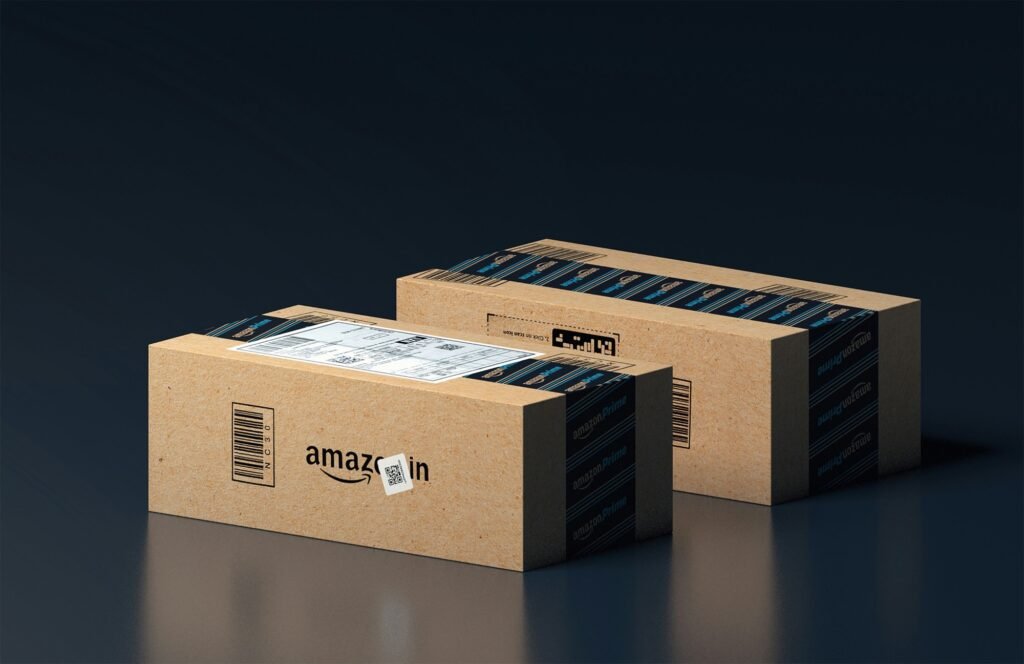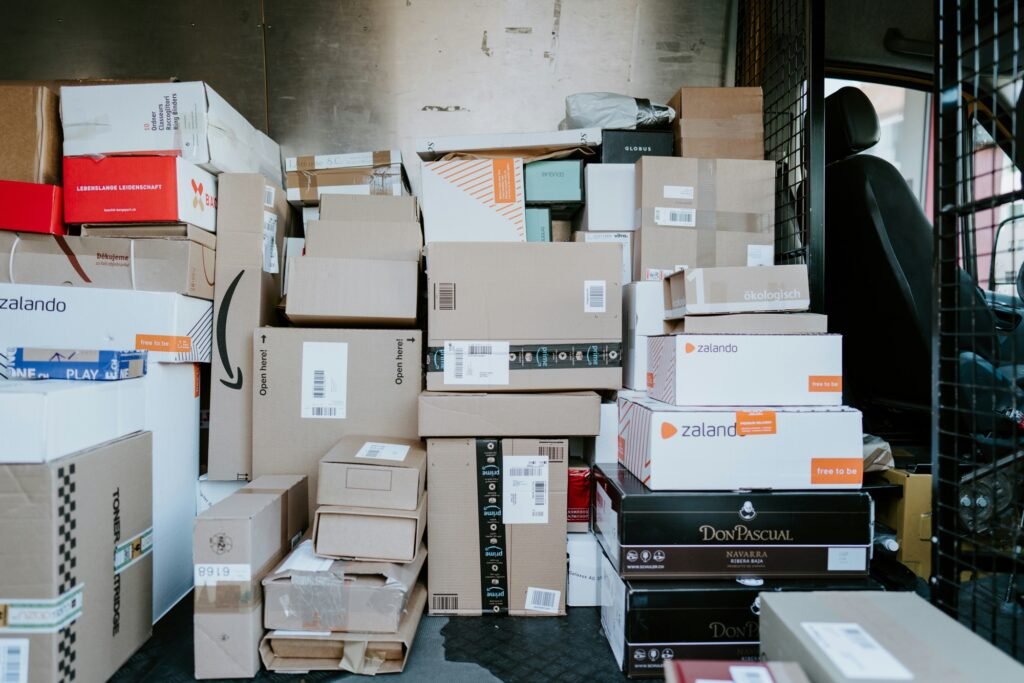Bhai, that next-day delivery just cost the planet 2.5kg of CO2. Time to rethink that midnight shopping spree!
Picture this: It’s 11 PM, you’re scrolling through your phone in bed (first of all don’t do that – it’s bad for health), and suddenly you need that quirky phone case that’ll reach you tomorrow. One click, done!
But here’s the plot twist nobody talks about—your instant gratification just sent Mother Earth a bill she can’t afford to pay.

The Great Indian Packaging Circus
Let’s start with the elephant in the room: packaging waste. If you’ve ever ordered a single pen online in India, you know the drill. It arrives in a box big enough to house a cow, wrapped in enough bubble wrap to pop your way to enlightenment, sealed with tape that could probably hold together a broken marriage.
The bubble wrap pop is a very satisfying activity but that’s not the point.
The numbers are sobering. Online shopping in India generates approximately 13.2 million tonnes of packaging waste annually. That’s like gifting the environment a mountain of cardboard taller than the Himalayas every year.
Indian e-commerce platforms are particularly guilty of this overkill approach. Order a tiny earring? Boom—six layers of packaging. Buy a book? It comes cushioned like it’s carrying nuclear codes. The irony? Most of this packaging is designed for a delivery system that treats packages like they’re playing cricket with them.
Crunching the Environmental Math
Every online purchase creates what scientists call a carbon footprint—basically, the invisible pollution trail your shopping habits leave behind.
The brutal truth:
- One standard online delivery in India generates 2.5-4kg of CO2
- Air-conditioned warehouses add another 0.5kg per order
- Return deliveries (because that kurta didn’t fit quite right) double the impact
- Express deliveries can increase carbon emissions by 200-300%
To put this in perspective: if you order something online twice a week, your annual shopping carbon footprint equals driving a car from Delhi to Chennai. And back.

Tech to the Rescue: Your Green Shopping Arsenal
Thankfully, technology isn’t just the problem—it’s also becoming the solution. Several sustainable shopping apps and carbon calculators are helping Indian consumers make smarter choices.
Game-changing tools:
- Carbon footprint calculators that show the environmental cost before you click “buy”
- Sustainable shopping apps that prioritize eco-friendly products and sellers
- Delivery optimization platforms that group orders to reduce transportation impact
- Package-free delivery options slowly emerging in metros
Some Indian startups are even experimenting with AI-powered delivery routes that minimize fuel consumption and biodegradable packaging alternatives made from agricultural waste. Because if anyone can turn sugarcane bagasse into packaging genius, it’s us Indians! Also good use of AI.
The India Factor: Distance Matters, Yaar
Here’s something uniquely challenging about online shopping in India: geography. Ordering from a local warehouse in your city versus one 2,000km away makes a massive difference to your carbon footprint.
Local vs. distant delivery impact:
- Local warehouse delivery: 1.2kg CO2
- Inter-state delivery: 4.8kg CO2
- International shipping: 12-15kg CO2
Most shopping platforms don’t tell you where your item is shipping from until after you’ve ordered. It’s like playing environmental roulette with every purchase.
Indian logistics networks are still developing, which means packages often take unnecessarily long routes. Your Bangalore order might go via Mumbai just because that’s how the system is set up. It’s like taking a bus from your house to the neighbor’s via three other states—inefficient doesn’t even begin to cover it.

Conscious Alternatives: Shopping with a Brain (and Heart)
Before you swear off online shopping forever and go back to fighting for parking at the mall, here are some practical, planet-friendly alternatives:
Smart shopping strategies:
- Bulk ordering: Combine multiple purchases into one delivery
- Local marketplace apps: Choose platforms that prioritize nearby sellers
- Eco-conscious brands: Support companies with sustainable packaging policies
- Planned purchases: Resist the urge for impulse buying (goodbye, 3 AM shopping sprees)
- Package-free options: Some brands now offer minimal or no packaging
The weekend warrior approach: Plan your online shopping like a military operation. Make a list, check it twice (whether naughty or nice), and order everything together. Your wallet and the planet will thank you.
The Way Forward: Small Changes, Big Impact
Look, I’m not asking you to go completely offline and start bartering with coconuts. But being mindful about your online shopping habits can make a real difference.
Think of it this way: every time you choose a local seller over a distant one, you’re essentially voting for a cleaner environment. Every time you resist that impulse purchase, you’re giving the planet a little breathing room.
I’ve long advocated supporting local stores wherever possible (right from my very first blog post). Closer to Diwali I’ll release a YouTube video imploring everyone to support local (please subscribe).
The bottom line? Your convenience doesn’t have to cost the Earth—literally. With a bit of planning and the right tools, you can shop smart, shop local, and still get that retail therapy fix without the environmental guilt trip.
Now, about that phone case you were eyeing—maybe check if it’s available at the shop downstairs first? Just saying.
Remember: conscious shopping isn’t about giving up convenience; it’s about making convenience sustainable. And if anyone can figure out how to do that jugaad-style, it’s us Indians!
